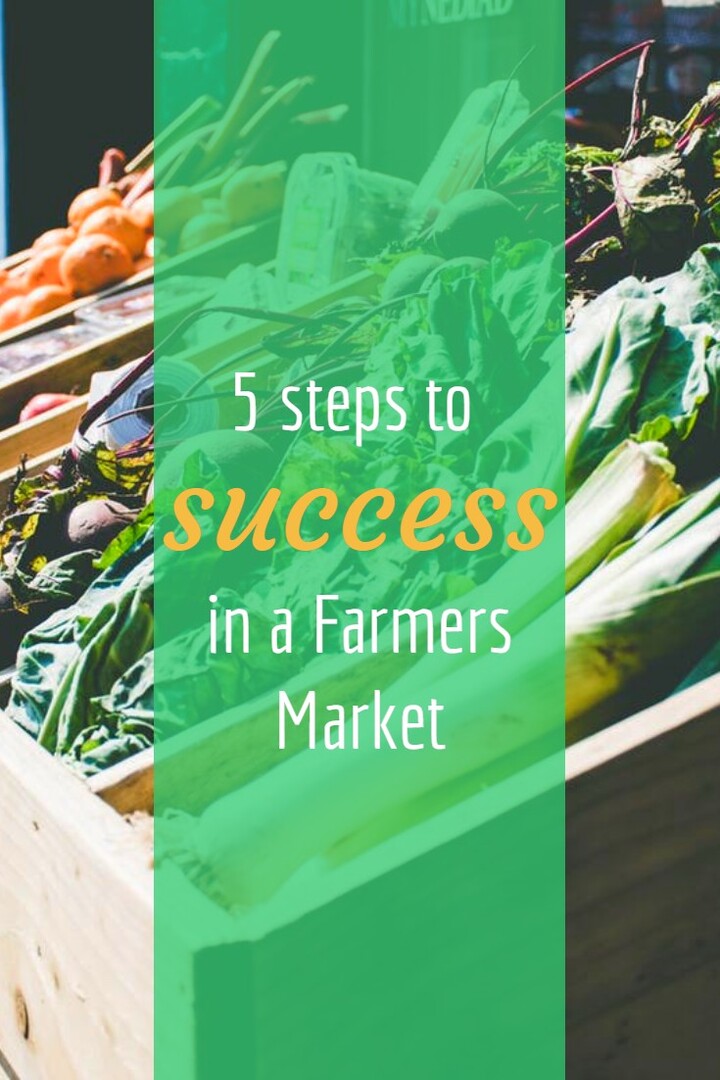
Growers of all levels, from hobby gardeners to commercial producers, can often find themselves with a crop even more abundant than they had hoped for. While interest in good farmers markets has surged in recent years, so has over-saturation and competition. The number of farmers markets in the U.S. has grown from 1,755 in 1994 to more than 7,850 in 2012, according to the USDA. Yet NPR reports that 2018 saw our then 8,600+ farm markets start to fail.
For small-business owners, farmers markets can provide easy and affordable opportunities to reach new customers, test new products, and supplement their incomes. Careful planning and forethought can help growers to succeed in a competitive farmers market.
1- Target Fresh Produce Markets
Establishing your target consumer and selecting the right way to reach them is one key to your success in a farmers market. Your ideal consumer can vary depending on what you offer and how it relates to the audience you hope to attract.
If your specialty is affordable fresh staple grocery items, consider markets and cooperatives that serve the local residents of a food desert.
If you’re an organic grower, consider targeting upscale “foodies” who are concerned about nutrition and locally grown produce.
And if you produce local or regional produce or botanicals, you might most appeal to out-of-town visitors who are looking for something out-of-the-norm. Tourist locations and markets near local attractions should bring ideal customers to your booth with regularity.
2- Plan Your Farm Market Strategy
The pressures of growing and farming can cause established market vendors to drop out regularly. This can leave market managers eager to find new vendors to fill those spots. Be selective in choosing a venue. If there are several established in your area, make sure to visit each to see how your offerings equal success in each farmers market.
In most places, it’s no longer necessary to be a farmer to become a market vendor. Many markets allow vendors to sell prepared goods, arts and crafts, clothing, etc. How well do your items fit in with the overall feel of the market?
If there is a lot of competition with your products, or if there is too much diversity away from your focus, it may be difficult to find success in that farmers market.
Consider the spectrum of what you can offer. Fresh produce pairs well with local honey, dried herbs, cured meats, fresh cut flowers, artisan-made vases and pots, seedlings, nuts, baked goods, hand-made soaps and candles—you may find an outlet for many of your home-grown hobbies!
3- Evaluate Community Support for Farmers Markets
Community support is necessary for a strong farmers’ market. Local residents, government, and area businesses help a market to contribute to the community. Without community resources, a market and its vendors may struggle. In addition to the number of farmers, also look at participation from local gardeners, craftsmen, chefs, artists, and community garden organizers to give an indication of interest.
If there are too few farmers and too few customers to make a market viable, look for a single, stronger farmers market, even if it is a farther distance. Several communities partnered in one market can be a more exciting venue for customers and a more profitable market for farmers.
4- Check Market Rules and Bylaws
Most farmers markets have rules, and many operate as cooperatives with bylaws. Be aware of your responsibilities as a part of the farm market community. In addition to fees for your space at the market, you may also be expected to participate a certain number of times per month, to provide your own displays, to secure your merchandise when the market is closed, or purchase a vendor license. Some markets may even require a buy-in for advertising dollars, or require sales tax accounting.
5- Decide on Payment Options
Plan ahead to determine the best payment options to prepare for farm market sales. If you’ll be a cash-only operation, you’ll want plenty of small bills to use for change. Many people now also offer credit card processing via their cellphone, for those spur-of-the-moment buyers who may not have cash on hand. Paypal, Venmo, ApplePay and the like are also options to consider.
Another option that helps your local community is to participate in government programs, which can help local economies by increasing sales, while helping those in need.
- Supplemental Nutrition Assistance Program–administered by USDA Nutrition Program
- Farmers Market Women Infant Children (WIC) Program–administered on a state level by the Department of Agriculture
- Senior Farmers Market Prog– administered on a state level by the Department of Agriculture
As with any business decision, there are many things to consider when entering the direct-to-community farmer’s market arena. With wise choices, a little planning, and a crop ready to sell, you can have great success in a farmers market. Ready to get growing? Shop Gothic Arch Greenhouses today for everything you need to ensure a bumper crop and a happy harvest
